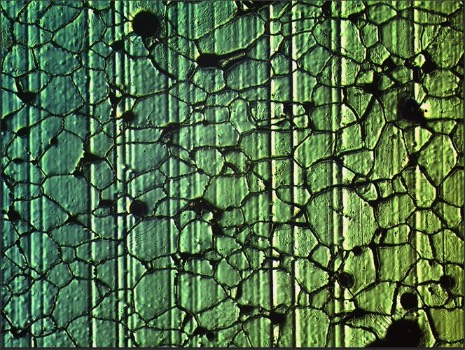Student Spotlight
KCC Student Spends Summer on ‘Cool’ Research
Michelle Berkmans graduated high school at 16, spent a year in Rwanda and now researches ice at one of the world's top Earth science labs.
The 18-year-old Kingsborough Community College student spent the summer interning at Columbia University's Lamont-Doherty Earth Observatory. There, she studied how temperature and salt water affect ice grain growth, research that could help scientists predict rising sea levels.
"I decided to graduate high school when I was 16 to give myself time to explore potential career paths," Berkmans said. After working as a professional photographer, she moved to Rwanda for a year.
"While living there, I developed a strong admiration and deep respect for the Rwandan government's commitment to sustainability, which sparked a shift in my goals," she said.
That experience changed her career plans. She realized she wanted work that combined financial stability with meaningful impact.
"My passion for ensuring a healthy future for my generation, and finding creative solutions to navigate and mitigate the effects of climate change inspired me to pursue environmental engineering," she shared.
Berkmans enrolled in KCC's engineering science program at 17 while still living abroad. She completed her first semester online before returning to Brooklyn. "I've always been interested in science. I’ve loved to invent and build things since I was a kid," she said.
The Bronx native found support through the college's Equity in STEM program, facilitated by professors Michael Danza, Homar Barcena and Jodie Delsol, who became her mentors.
"Through the Equity in Stem program, I was able to find out about the internship opportunity at Lamont-Doherty Earth Observatory and receive strong letters of recommendation," Berkmans said. "Their support has been invaluable, and I'm deeply grateful for their constant positive reinforcement."
At Lamont-Doherty, Berkmans worked with researchers Cassandra Seltzer and Christine McCarthy on ice grain studies. The work was funded by the National Science Foundation.
Her daily tasks included preparing and analyzing ice samples in a freezer, tracing grains by hand and using computers to track grain growth over time.
"There is little data on how saltwater affects ice grains in warming temperatures,” she noted. “I was inspired to join this project because the findings could be used to model glacial flow and predict rising sea levels.”
The experience improved her lab skills and coding abilities. It also helped her feel more comfortable in a professional lab setting as a young undergraduate.
She also wrote a research paper and created a poster presentation, gaining skills that improved her scientific writing.
"My experience with them this summer was truly remarkable, and I'm grateful to NSF for funding this work," Berkmans said of her time at the observatory. She will continue her research at Lamont-Doherty this fall as a lab assistant.
"My dedication to addressing climate change and understanding human impact on the planet continues to grow," she said. "I'm currently applying to four-year colleges for the Spring 2026 semester, where I plan to pursue a degree in environmental engineering."

Michelle Berkmans outside Columbia University's Lamont-Doherty Earth Observatory's
walk-in freezer where samples are created and analyzed

Berkmans polishing ice samples

Closeup of ice grains as seen under a light microscope

Berkmans with her poster, titled "The Effects of Meltwater, Temperature, and Salinity on Ice Growth."
